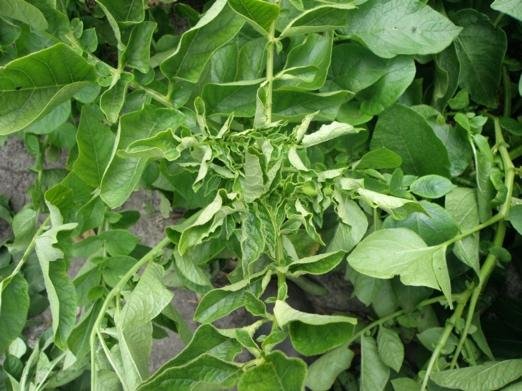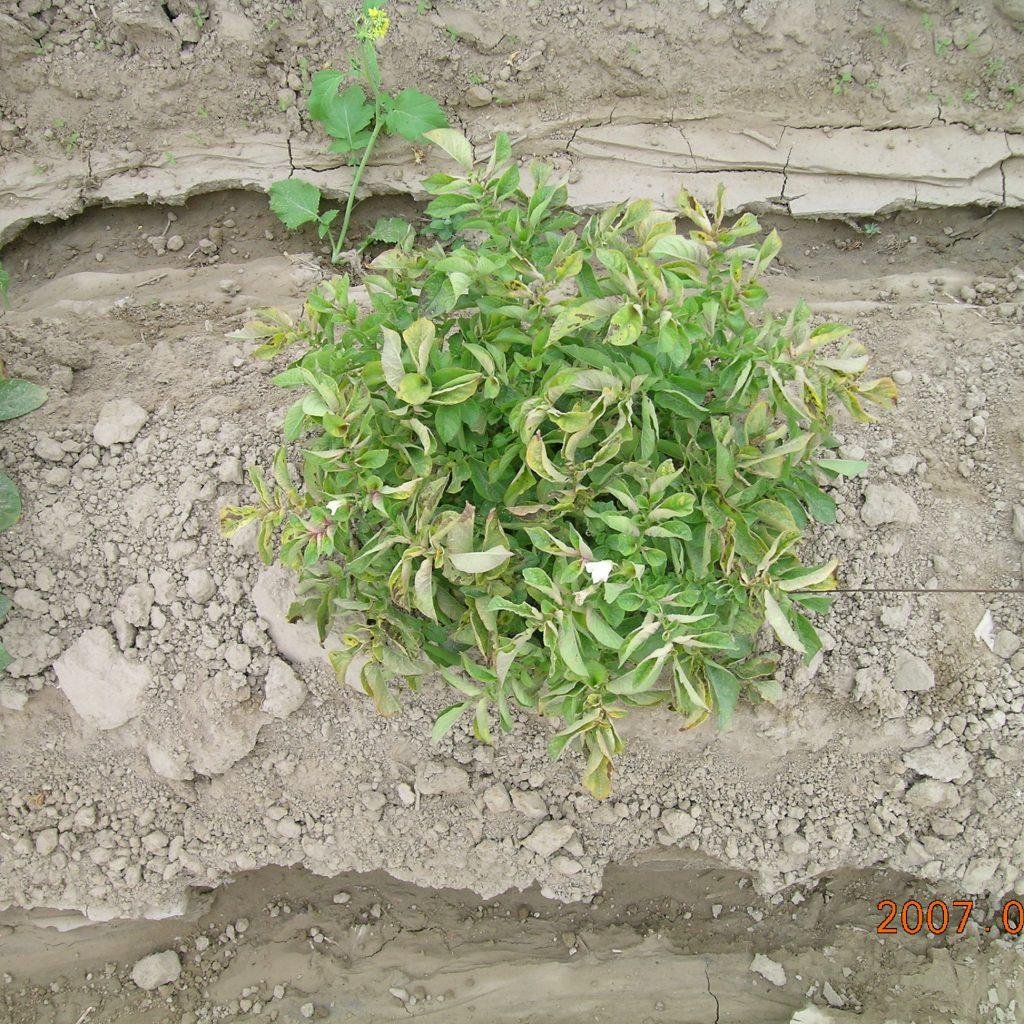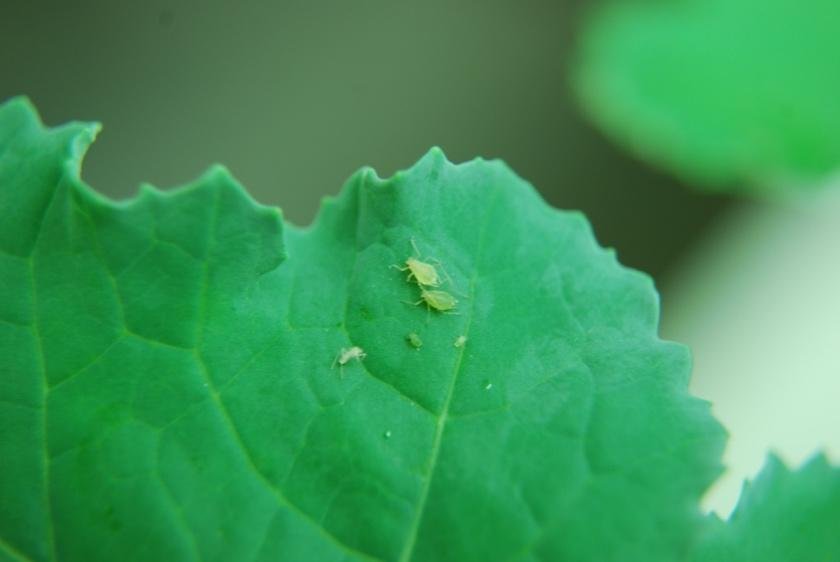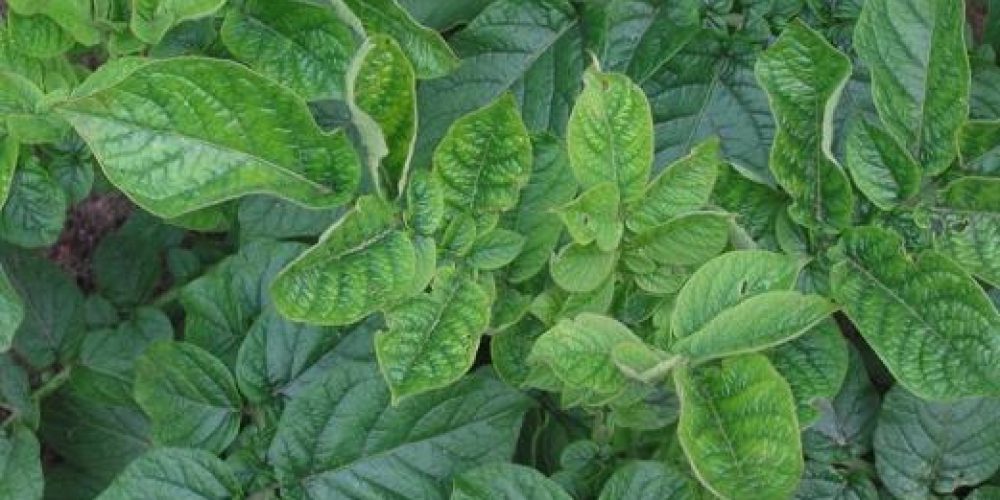Table of contents of the article
ToggleLeaf blight virus is a disease that affects potatoes, causing leaves to curl and curl, affecting the plant's productivity. This article from the “WORLD OF PLANTS” website reviews the symptoms of leaf curl virus in potatoes and methods of prevention and control.
Introduction to potato leaf blight virus
- Disease name: Potato leaf roll virus (PLRV).
- Scientific name: Polerovirus
- Type of disease: viral
- Virus family: Luteoviridae
Potato leaf roll virus (PLRV) is a notorious pathogen that greatly affects potato crops worldwide. This viral infection belongs to the Luteoviridae family and is caused by Polerovirus. Understanding its life cycle, symptoms, preferred conditions, causes of infestation, and control strategies are crucial for growers to minimize losses and secure their potato harvests.
Life cycle of potato leafroll virus
The life cycle of PLRV involves a complex interaction between the host plant, vector insects, and environmental conditions. Aphids, especially the green peach aphid (Myzus persicae), are the main vectors. The virus is acquired by aphids as they feed on infected plants, and is transmitted to healthy plants once the aphids move and feed. The virus multiplies in the phloem of the potato plant, eventually causing symptoms.
Symptoms of leaf roll virus in potatoes
• Early symptoms: In the initial stages, infected plants may show minor symptoms such as mild yellowing and growth problems. These early signs often go unnoticed by many, but are an indicator of more severe problems.
• Advanced symptoms: As the infection progresses, more noticeable symptoms appear, including leaf curling, curling, and characteristic yellowing of the leaves. The general activity of the plant decreases, which affects tuber development and yield.
• Characteristic symptoms: One of the distinctive features of PLRV is the pronounced upward rolling of the leaves, resembling a tube. This sign is considered unique from other potato diseases, and helps in identifying the infection easily.



Favorite conditions for leafroll virus in potatoes
- temperature: Optimum temperatures for PLRV transmission range between 18-25°C.
- Humidity: High humidity levels facilitate aphid activity and virus transmission.
- Climate: PLRV is widely distributed in temperate and subtropical regions.
- Optimum temperatures for PLRV transmission range between 18-25°C. Infestations are at their peak during the growing period, especially in late spring and early summer.
- Optimum temperatures for PLRV transmission range between 18-25°C. There are no specific soil requirements; The virus spreads mainly through vectors.
- Environment Preferences – Farmhouses vs. Open Fields: PLRV can occur in both greenhouses and open fields, where vectors freely transmit the virus outdoors and within controlled environments.
Causes of leaf blight virus infection in potatoes
- Transmission of the virus by aphids: Aphids play a crucial role in spreading PLRV.
- Potatoes grown from infected tubers: Planting infected tubers exposes the new crop to the virus.
- Dense planting: Close proximity between plants facilitates the movement of aphids and the spread of the virus.
- Failure to rotate crops: Growing potatoes continuously in the same area increases the risk of PLRV transmission.

Losses of leaf blight virus infection in potatoes
PLRV can lead to significant economic losses due to low yield, poor tuber quality, and marketing problems. Infected crops may also experience faltering growth, ultimately affecting farmers' profits.
Control strategy for leaf blight virus in potatoes
A. Agricultural practices
- Row spacing: Increase row spacing to reduce aphid movement between plants.
- Insect nets: Use insect nets to prevent aphids from reaching crops.
- Weed control: removing weeds that may be alternative hosts for aphids.
- Trick crops: Plant trick crops to divert aphids away from staple crops such as wild tulips and sunflowers.
B. Chemical methods
- Insecticides: Use insecticides such as neonicotinoids or pyrethroids to control aphid populations.
- Inducers of acquired resistance (SAR): The use of chemicals that stimulate acquired resistance in plants, enhancing their resistance to viruses such as (ASM) Acibenzolar-s-methyl and (PBZ) Probenazole.
C. Organic methods
- Neem Oil: Neem oil acts as a natural insect deterrent.
- Co-planting: Planting garlic or onions alongside potatoes can deter aphids.
- Biological enemies: Introducing natural enemies such as ladybugs to control aphid populations.
- Effective Nematodes: Nematodes can help control aphid larvae in the soil.
- Parasitic wasps: Encourage the presence of parasitic wasps that prey on aphids.
- Fungi: Certain types of fungi can infect and kill aphids, such as Beauveria bassiana and Metarhizium anisopliae.
- Virus-resistant potato varieties: Development and cultivation of PLRV-resistant potato varieties.
Preventive measures for leaf roll virus in potatoes
- Use certified tubers: Ensure that potato tubers are certified PLRV-free.
- Crop rotation: Crop rotation to break the life cycle of PLRV.
- Monitor aphid numbers: Monitor and manage aphid numbers regularly.
- Quarantine infected plants: Isolate and remove infected plants immediately.
- Implement good agricultural practices: Adhere to recommended practices for planting, irrigation and pest control.
Conclusion
In conclusion, understanding potato leafroll virus is essential for farmers seeking to protect their potato crops. By adopting a comprehensive approach that includes effective, mechanical, chemical, organic and biological methods, along with preventive measures, farmers can reduce the impact of PLRV and ensure a healthier and more productive potato harvest.
We would like to point out that we, on the World of Plants website, provide you with all the services you need in the world of plants. We provide all farmers and those interested in plants with three main services: -
- Artificial intelligence consulting service to help you identify diseases that affect plants and how to deal with them.
- Blog about plants, plant diseases and care of various crops ... You are currently browsing one of her articles right now.
- An application that provides agricultural consultations to clients, as well as a service for imaging diseases and knowing their treatment for free – Click to download the Android version from Google Play Store، Click to download the IOS version from the Apple App Store.
Sources:
General:
- National Center for Environmental Assessment (NCEA): https://en.wikipedia.org/wiki/Potato_leafroll_virus
- Potato Research Council (PRC): https://www.nationalpotatocouncil.org/advocacy/policy-priorities/appropriations-research/
- American Phytopathological Society (APS): https://www.apsnet.org/
Specific Sections:
- Disease Name and Type:
- International Committee on Taxonomy of Viruses (ICTV): https://ictv.global/taxonomy
- Life Cycle:
- Agriculture and Agri-Food Canada: https://www.sciencedirect.com/topics/agricultural-and-biological-sciences/potato-virus-a
- University of California IPM: https://ucanr.edu/blogs/blogcore/postdetail.cfm?postnum=56637
- Symptoms:
- Washington State University Extension: https://mtvernon.wsu.edu/path_team/potato.htm
- University of Idaho Extension: https://www.uidaho.edu/cals/potatoes
- Preferable Conditions:
- Potato Council: https://archive.ahdb.org.uk/knowledge-library/aphid-and-virus-potatoes
- Agriculture and Food Western Australia: https://www.wa.gov.au/system/files/2022-04/Code-of-practice-for-environmentally-sustainable-vegetable-and-potato-production-in-WA.pdf
- Disease Reasons:
- AHDB Horticulture: https://horticulture.ahdb.org.uk/knowledge-library/identification-of-potato-aphid-and-transmitted-viruses
- University of Nebraska Extension: https://link.springer.com/book/10.1007/978-94-007-0842-6
- Disease Infestation Losses:
- Food and Agriculture Organization (FAO): https://www.fao.org/home/en
- USDA-ARS Potato Research Laboratory: https://www.nass.usda.gov/Statistics_by_State/Wisconsin/Publications/Miscellaneous/2023/WI-Ag-Chem-Potatoes-2023.pdf
- Control Strategies:
- AHDB Horticulture: https://archive.ahdb.org.uk/knowledge-library/aphid-and-virus-potatoes
- Oregon State University Extension: https://www.frontiersin.org/articles/10.3389/fpls.2022.1031629
- Preventive Measures:
- USDA-APHIS Plant Health: https://www.aphis.usda.gov/aphis/home/
- National Sustainable Agriculture Information Service (ATTRA): https://attra.ncat.org/




